One of the most peculiar buildings in the world is located in the city of Barcelona,
In this post, you’ll discover the ultimate list of facts about Casa Milà, a remarkable Art Nouveau structure for multiple reasons.
1. What is Casa Milà?
Casa Milà wasn’t constructed as a palace such as for example the Alhambra, but a residential building for the couple Roser Segimón and her husband Pere Milà. The wife was the widow of a wealthy expat in South America who made a fortune with a coffee plantation in Guatemala.
In the early 20th century, they bought a piece of land of 1,835 square meters (19,751 sq ft) in the center of Barcelona which contained an existing building and decided to demolish it and build an apartment block.
The idea was that they would live on the ground floor and the apartments on the other floors would be rented out.

2. It was designed by an eccentric Catalan architect
The couple hired Antoni Gaudí, a reputable Catalan architect who was already very famous in Barcelona. His style was quite eccentric and can be defined as one-of-a-kind.
Apart from numerous apartment buildings that can be found all over Barcelona, for example, the Casa Batlló, his most famous work is the “Sagrada Familia,” A Roman Catholic Minor Basilica which was never finished, but became the most-visited monument in all of Spain.

3. Casa Milà has another nickname
The locals aren’t referring to the house as “Casa Milà” but call it “La Pedrera.” This literally translates to “The Stone Quarry.”
The reason? Because it pretty much looks like it has never been finished and resembles an actual stone quarry.
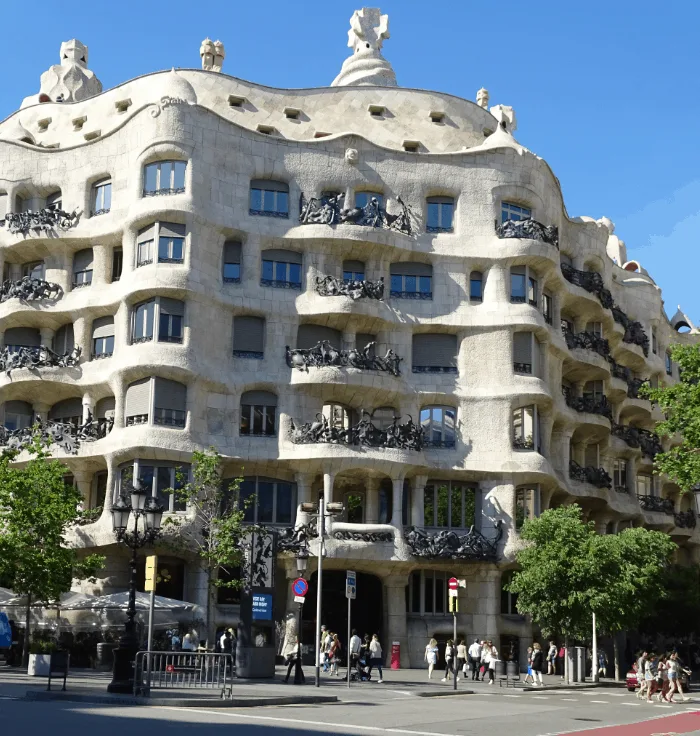
4. It’s well over 100 years olds
The Milà’s had bought the land on June 9, 1905, and shortly after hired Gaudi to design the apartment block. On February 2, 1906, the plan was ready and presented to the council in Barcelona and subsequently approved.
The construction of Casa Milà started in 1906 and it wasn’t until October 31, 1912, that Gaudi created a certificate claiming that the building was completed according to his plan, and it was ready to be inhabited and rented out.
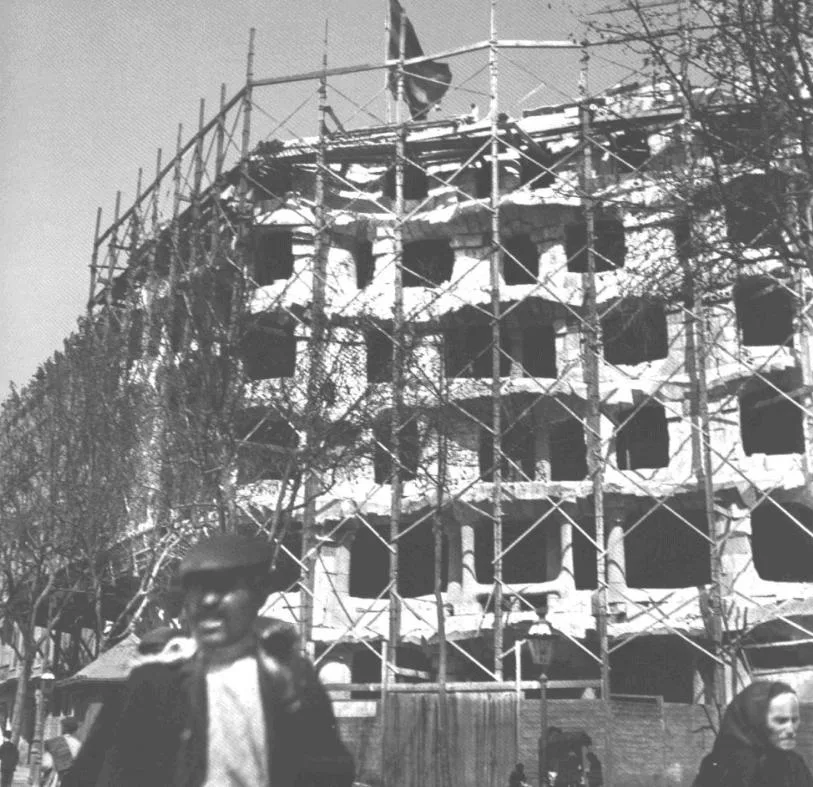
5. The design was extremely controversial
The locals didn’t give the building the nickname “La Pedrera” because of their admiration for Gaudi’s work. They did so in an attempt to ridicule what they considered to be an abomination.
On top of that, several pamphlets were created to further emphasize the way they felt, including making fun of the relationship between Gaudi and the owner of the building Pere Milà.
6. Gaudi wanted to turn Casa Milà into a religious symbol
Gaudi was known to be deeply religious and a devotee of the Virgin Mary, and he saw this project as a means to create a new religious symbol in the city of Barcelona.
Some of the things he included were an excerpt of the Rosemary on some ornaments and statues of the Virgin Mary as well.
7. Gaudi Nearly abandoned the project
A combination of receiving too many fines from the city of Barcelona for violating the building code and the “Semana Trágica,” an outbreak of anti-religious protests, made Pele Milà decide to remove the statues from the building.
This wasn’t to the liking of the deeply Catholic Gaudi who thought about abandoning the project completely in 1909.
Because a priest was able to persuade him to continue, he eventually ended up finishing the building.

8. Casa Milà served many purposes
After Pere Milà died in the year 1940, the building was sold and managed by a real estate company. Milà’s wife still occupied the main floor until her death in 1964.
After that, the building served as an academy, offices for various companies, and even a bingo hall.
9. The building was deteriorating rapidly
By the 1970s, the building was already in poor condition. The cost to maintain the building was very high, and its stones were literally falling on the street.
It wasn’t until the building was declared a World Heritage Site by UNESCO in 1984 that serious renovations were done to fix the by then dilapidated building.
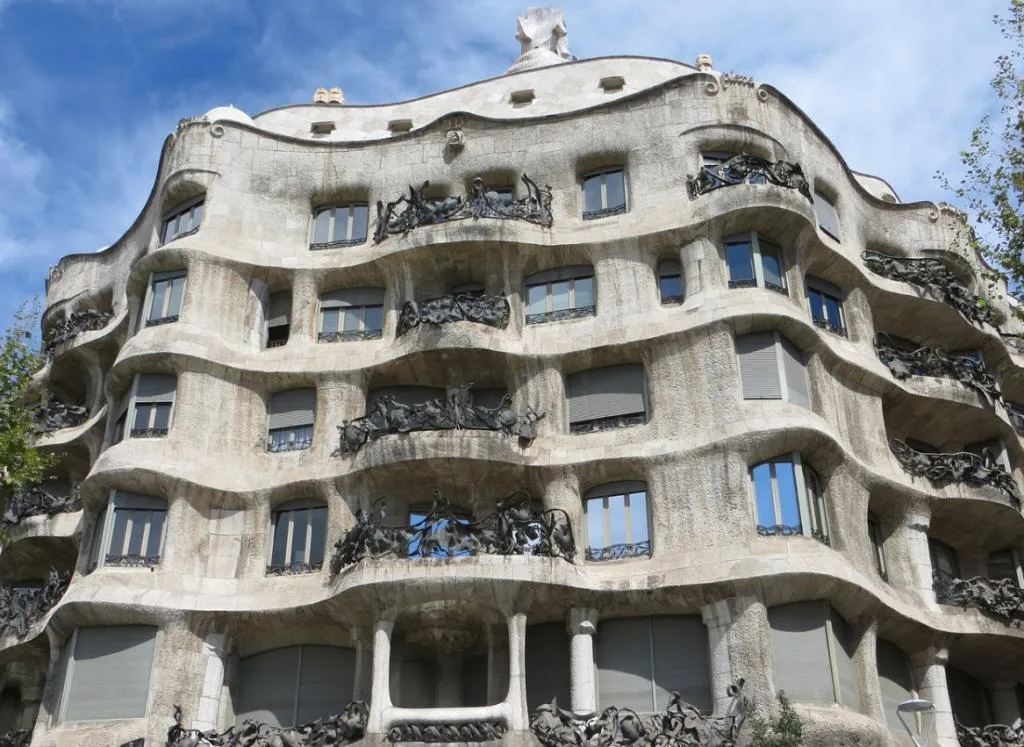
10. It’s now the headquarters of a non-profit organization
Since 2013, a non-profit organization named after the building’s nickname, the “Fundació Catalunya La Pedrera,” has its headquarters inside the Casa Milà.
It’s an organization that describes itself as a foundation that “supports society by building a better and fairer future.”
This organization is also responsible for the guided tours inside the building, as well as exhibitions and other cultural and educative activities held at Casa Milà.
Quick facts about Casa Milà
11. It consists of 2 buildings with 9 floors which are structured around 2 courtyards.
12. It’s built on a plot of 1,620 square meters (17,436 sq ft) and each floor has a total size of 1,323 square meters (14,240 sq ft).
13. The courtyards are built in such a way that they provide light to all 9 stories, including the basement.
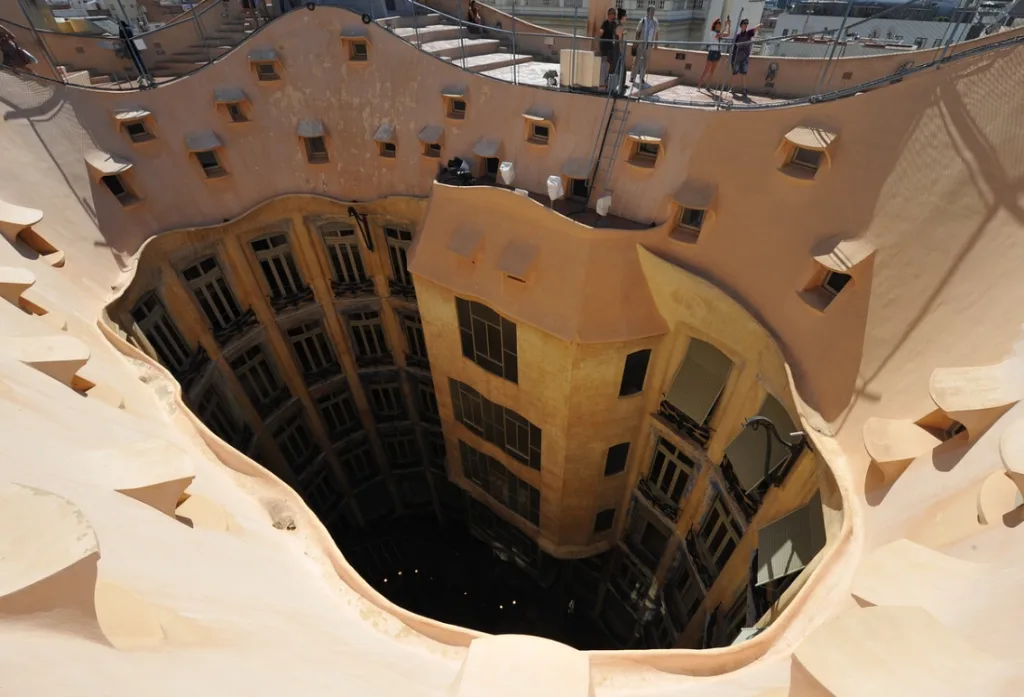
14. The building is shaped like an asymmetrical 8 because of the shape of the courtyards.
15. The stone facade of the building is self-supporting, which means there are no supporting walls inside the building. This makes it easy to redesign the interior.
16. The main floor is made with limestones from the Catalan Garraf Massif and the upper floors are constructed with limestones from the Villefranche quarry in Southern France.
17. The original iron bars on the first floor were removed when a store opened its doors in 1928. They eventually ended up in New York and are now on display in the Museum of Modern Art.

18. It’s one of the first buildings that used the basement as a parking garage for cars. One of the neighbors requested Gaudi to change it a bit though because his Rolls Royce couldn’t fit in it.
19. Gaudi was a peculiar figure and when the lady of the house, Madame Segimon, complained that there was no straight wall in the building to put her piano, he simply replied: “Then play the violin!”
20. One of the main attractions of Casa Milà is the roof, which contains 28 weird-looking chimneys and 6 skylights/staircases.

21. The stepped roof has been described by the poet “Pere Gimferrer” as the “Garden of Warriors,” as it appears that the chimneys seem to be protecting the skylights/staircases.
22. It’s believed that Gaudi got his inspiration for Casa Milà from a mountain. It’s not known, however, which mountain exactly.
There have been speculations it as either the rocks of Fray Guerau in Prades mountains, St. Miquel del Fai, or the cliffs Torrent Pareis in Menorca.
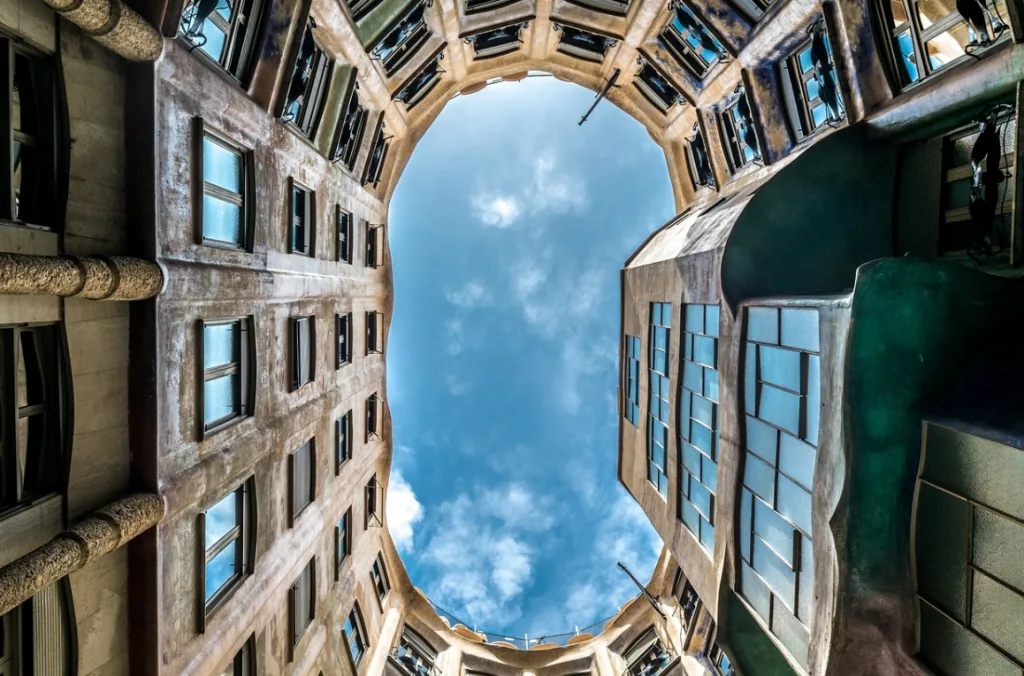
23. Another option regarding the inspiration that Gaudi had was that he got it from medieval castles because the chimneys on top resemble guards with helmets.
24. The Casa Milà plays a prominent role in Dan Brown’s 2017 Mystery Thriller “Origin,” the fifth installment in the novels featuring Robert Langdon. The best-known novel in the series is “The da Vince Code.”
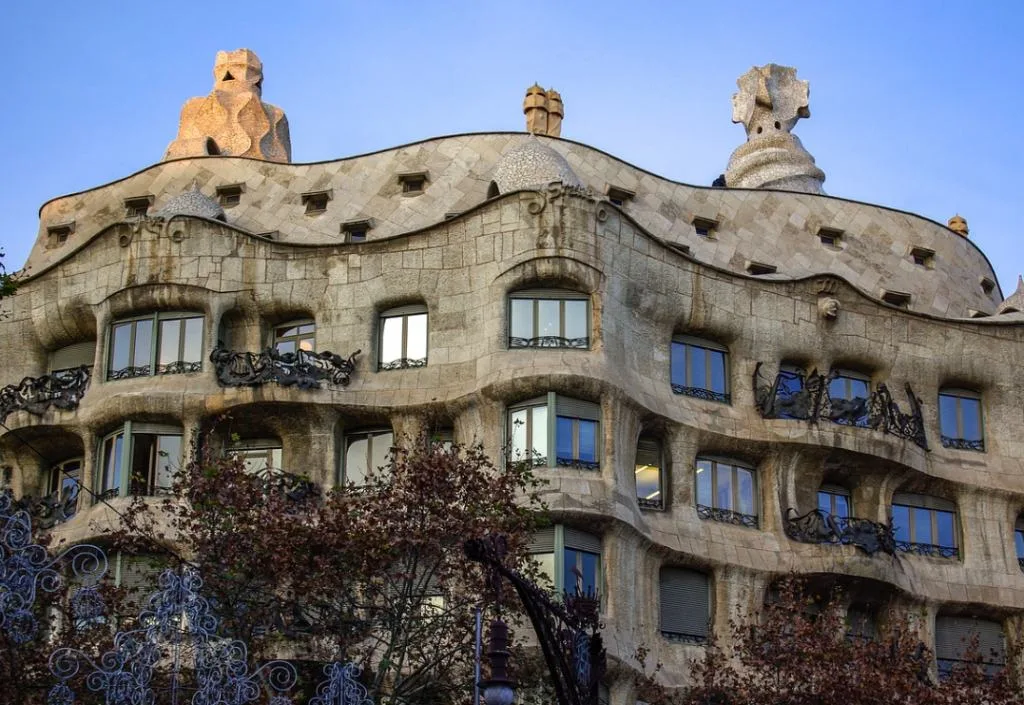



Leave a comment
You must be logged in to post a comment.